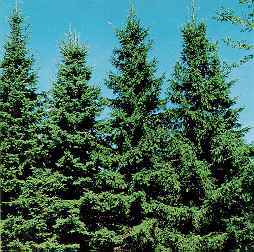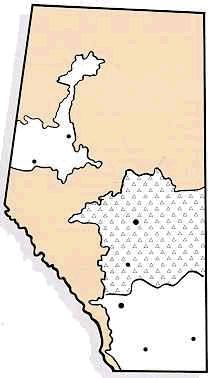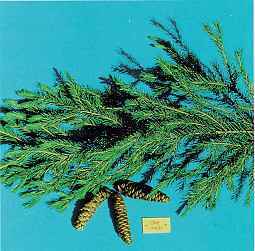| | Plant characteristics | Site preference | Hardiness | Uses | Problems | Insects | Pruning
.

Scientific Name: Picea abies (L) Karst.
Plant Characteristics
Native to Northern and Central Europe. Introduced into North America by early settlers.
This is a medium to large tree that is somewhat loosely branched and often recognized from a distance by the pendent secondary branches. Norway spruce can reach a height of 8 to 20 m (25 to 65 ft), with a spread of 6 m (20 ft). The tree has a tendency to thin out as it becomes old.
Norway spruce is a long lived tree from 50 to 100 years. It can grow from 25 to 50 cm (10 to 20 in.) a year till maturity.
Leaves - The leaves (needles) are 1 to 2.5 cm (0.4 to 1 in.) long, dark green and usually shiny, spirally arranged on branches. The needles are soft, like white spruce.
Cones - Cones are cylindrical, 10 to 15 cm (4 to 6 in.) long, light brown.
Bark - Bark is reddish brown, buds reddish or light brown without resin.
Site Preference
Norway spruce prefers a rich loam type soil. It will tolerate a wide range of soils, but requires a well drained soil.
The plant will survive while exposed to short periods of low moisture. The plant is not recommended for dryland area unless irrigation is provided.
Prefers full sun to half shade. It can withstand some shading. Prefers acid soil. Will not tolerate medium to high salt levels.
Hardiness
Not as winter hardy as the rest of our spruce. It experiences winter damage.
.


Uses
Norway spruce deserves planting as an ornamental. Can be planted as a farmstead planting. Recommended spacing is 2 to 4 m (6 to 13 ft) between trees in a row and 5 to 8 m (16 to 25 ft) away from adjacent rows. The tree provides cover and protection for wildlife.
Problems
May experience winter damage. The tree has a tendency to thin out as it becomes old.
Insects
May have infestation of red spider mites, pine-needle scale, yellowheaded sawfly, and spruce gall aphids.
Pruning
Pruning is not required, unless a double leader forms, when one must be pruned out. If a leader is not present a new leader must be trained. Remove and burn any branches that have boring insects.
.

Shelterbelts Varieties for Alberta provides information on a number of other trees and shrubs than may be suitable for shelterbelts.
Visit our website directory for the Reforestation Woodlot Listings
|
|